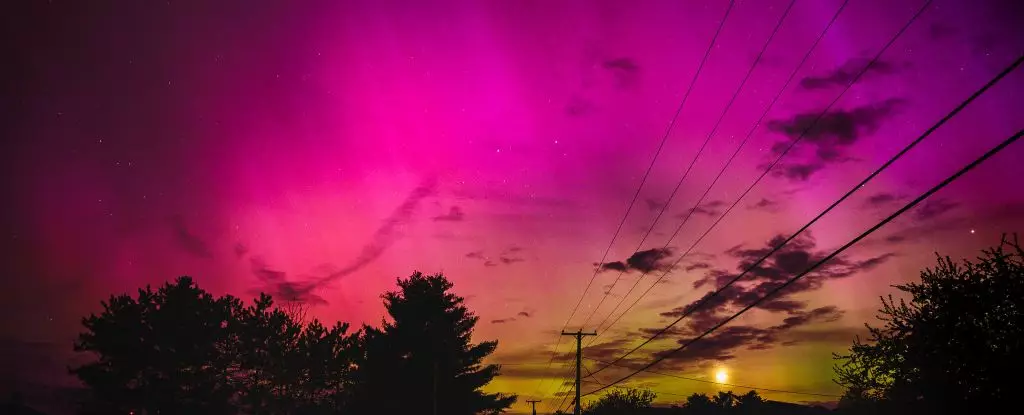Every so often, the Earth is treated to a magnificent display of green and red lights that paint the night skies. These spectacular lights are the result of solar storms, massive outflows of material from the Sun that collide with our magnetic field. While solar storms are not uncommon, the current storms have been particularly powerful, comparable to the Great Halloween Solar Storms of 2003. Despite the potential for disruption and damage on Earth, we have managed to weather these storms relatively unscathed.
The recent solar storms have generated two G5-level geomagnetic storms, which are classified as “extreme” and are the most potent type of solar storms that can affect our planet. These storms can pose a significant threat, as demonstrated by the Great Halloween Storms that caused power grid fluctuations in North America, a power outage in Sweden, and damage to power station transformers in South Africa. Although the current solar storms have not caused any substantial harm, reports of power grid irregularities have been noted.
The main culprit behind the current solar storms is the sunspot region AR 3664. This region is visibly active, emitting powerful X-class flares, the most intense flares produced by the Sun. However, the real danger lies in the coronal mass ejections (CME) associated with these flares. CMEs are massive eruptions of plasma and magnetic fields that can have a profound impact on Earth’s magnetic field and atmosphere. Despite the current solar storms dissipating in intensity, the threat of future storms looms with the presence of active sunspot regions like AR 3664.
The Dance of Auroras
When a CME from the Sun reaches Earth, it accelerates particles along the planet’s magnetic field lines, producing dazzling auroras in the atmosphere. While green auroras are common and are caused by solar particles interacting with oxygen at lower altitudes, the recent solar storms have produced vibrant red auroras resulting from interactions at higher altitudes. These red auroras must be significantly brighter than green ones to be visible to the naked eye, creating a mesmerizing spectacle in the night sky.
In addition to the stunning light show, solar storms can have practical consequences on Earth. Power grid anomalies can occur due to currents generated by particle interactions in the atmosphere, leading to surges that may damage electrical systems. Furthermore, satellites and high-frequency radio communications can be disrupted, impacting certain technological operations. As the active sunspot region AR 3664 continues to produce flares and CMEs, the potential for moderate geomagnetic storms remains a concern until the peak of the Sun’s 11-year activity cycle.
Enjoying the Splendor of Solar Storms
Despite the potential risks associated with solar storms, there is also an opportunity to witness the natural beauty of auroras produced by these celestial events. By monitoring space weather forecasts from organizations like the NOAA and the Australian Bureau of Meteorology, individuals can track the likelihood of experiencing auroras in different regions. As we marvel at the dance of light in the sky, let us appreciate the power and wonder of solar storms that illuminate our world in unexpected ways.



Leave a Reply